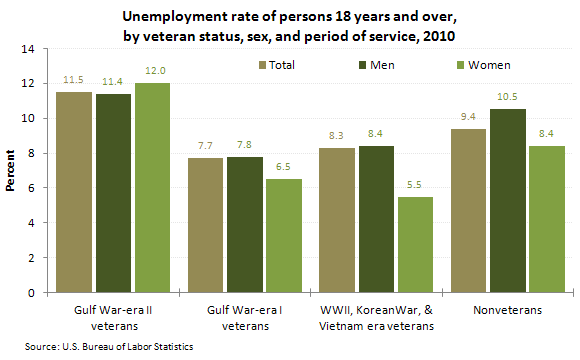Veterans Face Likely Unemployment
Etched in our collective memory is the image of the Vietnam War veterans who returned to the U.S. with limited access to physical and mental health services and help finding work. Now, a combination of factors have culminated in a whopping unemployment for veterans of more recent wars and military operations. That said, veterans from all the wars in recent history still face high rates of unemployment.
The name designated to the most recent generation of veterans reflects the ambiguity of the recent objectives of the military: Gulf War era II. The name refers to all veterans who served in the military at any time since September 2001. The unemployment rate for the Gulf War-era II veterans was 11.5 percent in 2010, surpassing the national average.
The difference in unemployment between veterans and non-veterans is particularly pronounced among women veterans. Female Gulf War era II veterans have an unemployment rate of 12 percent– as opposed to 8.4 percent of women. The women veterans from previous years seemed to have much higher rates of employment following a war, compared to their male counterparts. What is happening now that is making it so much harder for women who have served the country to find work? What services are specifically addressing this gender gap?
The unemployment rate of 7.7 percent for Gulf War-era I veterans (who served during the Gulf War-era I, August 1990 to August 2001), was lower than the rate for Gulf War-era II veterans in 2010. The unemployment rate for veterans of the earlier wartime periods (World War II, the Korean War, and the Vietnam era) was 8.3 percent.
Certain people and websites are specifically addressing the problem of veteran unemployment, such as RecruitMilitary.com and VetCentral.us, described here by Chad Sowash. The problem of veteran unemployment is so glaring and aggregious that military specific sites and services are springing up rapidly.


